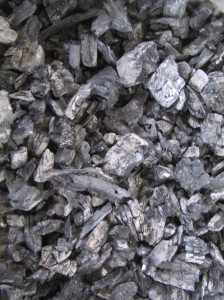 We have been researching and experimenting with producing biochar from our forest operations in Southern Oregon. Biochar is essentially charcoal, made from wood or other organic material that is used as a soil amendment.
We have been researching and experimenting with producing biochar from our forest operations in Southern Oregon. Biochar is essentially charcoal, made from wood or other organic material that is used as a soil amendment.
We are using feedstock that comes from local forest restoration projects as the feedstock. We are thinning local forests to reduce fuels and the potential for catastrophic wildfire, to promote forest health and wildlife habitat. Instead of burning this material down to ash, or letting it rot and release carbon dioxide into the atmosphere, it is being made into biochar. We have been experimenting with adding it to our forest soils, as well as research into garden and agriculture use.
Biochar is becoming well known as a beneficial soil amendment, as well as having the ability to sequester carbon from the atmosphere into the soil. This stable form of carbon can be locked into the soil for hundreds or thousands of years. When produced from materials that would otherwise be released into the atmosphere as carbon dioxide, biochar is being looked at as a tool to help reduce CO2 levels in the atmosphere.
Biochar is simply char coal that is made from biological sources, such as wood and agricultural wastes. Char retains the porous structure of the organic material it is made from. When added to soil, these pores provide habitat for beneficial microorganisms and mycorrhiza.
Just like a charcoal filter does, char adsorbs and retains nutrients where they will be available to plants, instead of being leached away. This reduces the amount of fertilizer needed, as well as the amount that will leach into and pollute runoff.
This porous structure can absorb a lot of moisture. This can reduce the amount of irrigation needed in a world of dwindling water supplies.